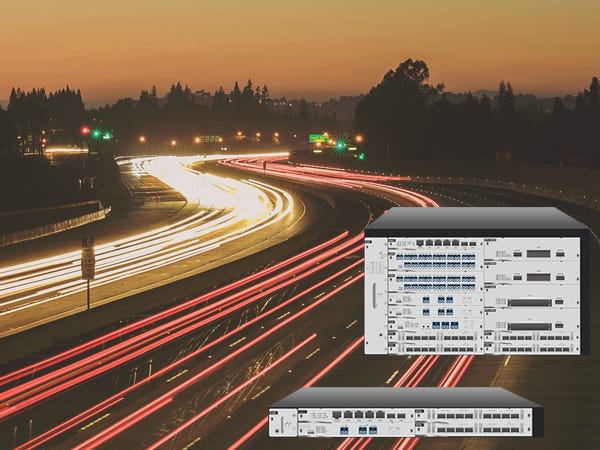Data Center Interconnect (DCI) is the technology that connects two or more data centers together over short, medium, or long distances using high-speed packet-optical connectivity. It connects your routers and servers to each other or to multi-tenant data centers, so you can get your users and data to the right cloud applications and services. This article describes how the htf Series product (HT6000 Series & HT6800 Series) is utilized in Data Center Interconnect (DCI) applications.
Data Center Interconnect Market Overview
The global data center interconnect market size was valued at USD 8.52 Billion in 2022. The data center interconnect industry is projected to grow from USD 9.78 Billion in 2023 to USD 29.50 Billion by 2032, exhibiting a compound annual growth rate (CAGR) of 14.80% during the forecast period (2023–2032). The increase in migration toward the cloud across the globe, high demand for cloud infrastructure for flexibility, and increasing demand for higher bandwidth in line with the continued advancement in the latest technologies, including the Internet of Things (loT), are the key market drivers enhancing the market growth.

Enterprise DCI Pain Points
Some of the most common pain points for organisations when attempting to connect their global data centres are:
Complexity: It can be resource-intensive and costly to manage multiple service providers across different markets around the globe. Relationships, pricing, monitoring and managing of network services all require internal resources and each service provider may have different capabilities and quality of service (QoS) in different markets.
Flexibility and scalability: In a market-driven by cloud, it is critical to be able to quickly roll out new services wherever there is demand and optimise connectivity for applications and services. Inflexible contracts and limited bandwidth options in traditional DCI ecosystems can make it difficult to capture new business opportunities and grow.
Geographical limitations: If an organisation chooses to be locked into a single data centre ecosystem, they can be challenged to grow in new markets where that provider might not be present. This stagnates the business’ ability to grow seamlessly and instantly introducing new services globally. With a limited data centre footprint, they can not connect freely and will have to augment their network with more service provider relationships.
Leveraging the Advantages of HTF Series Products in DCI
Simple operations and quick turn-up: Designed for operational simplicity, the right DCI platform enables hassle-free, rapid scalability. With support for various interfaces, modulation schemes, and deployment scenarios, including the option to run over existing photonic lines, the simple operations and quick turn-up available with DCI helps streamline operations, business performance, and each customer’s experience.
Openness and programmability for easy automation with back-office tools: Common management interfaces and industry-standard APIs built into modern DCI solutions enable you to automate labor-intensive manual tasks to reduce errors from repetitive operations.
Peace of mind for traffic growth: High capacity and seamless scalability — to multiple terabits of capacity — help you meet traffic growth requirements for the foreseeable future without massive injections of CAPEX or network disruptions due to bandwidth exhaust.
Reduced recurring/operating costs: Optimized designs with low power consumption and compact footprints allow you to reduce electricity, cooling, and real estate costs.
HTF Series Features for Data Center Interconnect
HTF Series Products provides the best transport economy for high-capacity, high-growth applications. Its industry-leading density, scale, and capacity per wavelength allow Internet Content Providers (ICPs), Data Center Operators (DCOs), and Communications Service Providers (CSPs) to deliver a high-performance, quality experience to their end-user customers.
Multirate Hybrid Multiplexing: Support a flexible mix of 10G, 40G, and 100G services in operation modes, combining different protocols and rates over a single 200G uplink.
Long-distance transmission: Deliver carrier-grade high-end solutions capable of serving up to 200Gb Ethernet, enterprise, and DCI networks.
Built for Data Center Interconnect: Equipped with two hot-swappable intelligent fans for superior cooling and reduced power consumption, as well as 1+1 dual power supplies to support high-growth applications within an ultra-dense and compact platform.

1.6T high capacity platform in 1U: Used in enterprise DCI and metro networks for rack space savings and high capacity applications, delivering up to 1.6T in a 1U chassis.

Transmission capacity: Increase the transmission capacity, rack spaack space savings, and reduce fiber occupation by connecting with MUX/DEMUX.

Smart fans and power supplies: 2+1 intelligent fans achieve superior cooling and power reduction.1+1 dual power supplies can be removed or replaced without downtime.
Conclusion
HTF Series Products represents a best-in-class alternative to Compact DCI systems by providing not just the capacity required to meet interconnection needs but also the flexibility, manageability, ease of use and cost-efficiency that make it ideal for data center interconnection. In addition, HTF DCI products, , meet the optical networking needs of enterprises and carriers, and are ideal for DCI, metro access, and metro/regional networks.



没有评论:
发表评论